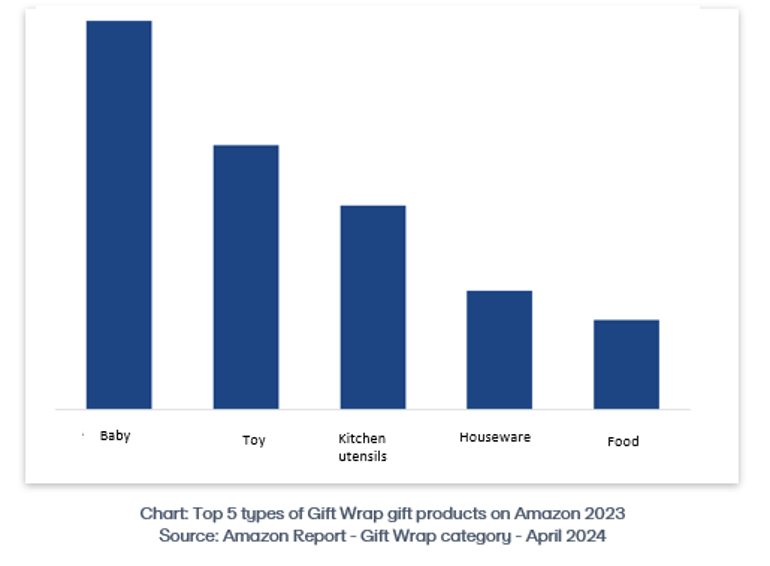Farmers hesitant to engage in off-season durian production
Having just sold the last of his durian crop in multiple batches to traders who came directly to his farm, Mr. Tu Ny, a farmer in Hung Thanh ward, Cai Rang district, Can Tho city, shared that at the beginning of the season, the price of durian was around VND 70,000-75,000/kg. As the main season progressed, the price of durian decreased rapidly and continuously; last week, it was VND 38,000/kg. “The price has increased slightly in the past few days, but it dropped again yesterday. Sometimes the price drops by tens of thousands of dong per kilogram, but the increase is only by a few thousand dong,” Mr. Ny said.
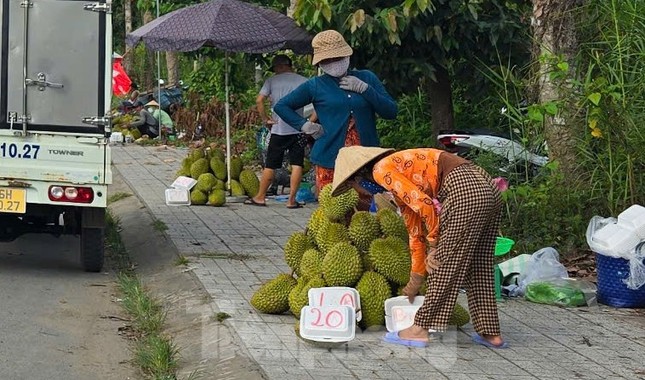
Cheap durians sold by the roadside in Phong Dien district, Can Tho city. Photo: CK.
With 20 units of land dedicated to durian cultivation, Mr. Ny harvests approximately 25 tons of fresh fruit each season. This year, his family earned more than VND 1.2 billion from their crop, profiting around VND 800 million after expenses—a profit that is more than halved compared to last year. This is the second harvest for Mr. Ny, and it is expected that it will take one more season for him to recoup his initial investment and the costs of caring for the trees over the past eight years.
“Previously, I intercropped durian with jackfruit to have a short-term source of income while waiting for the durian trees to mature, but as the durian trees grew larger, I had to cut down the jackfruit trees,” Mr. Ny added. “Due to the unpredictable market situation, I didn’t dare to induce off-season fruiting this year because the costs are high, but the output is uncertain. Recently, due to low trading prices, my family had to sell the durians individually, and we also peeled and sold the arils to acquaintances and friends to make a little extra money.”
Is the ‘billion-dollar’ crop cooling down?
According to some farmers, if the challenging situation persists, durian farmers may cut down their trees to switch to other crops. However, for now, the allure of the ‘king of fruits’ continues to attract many farmers in the Mekong Delta due to its significantly higher economic value compared to other crops.
“Despite the price fluctuations, durian is still attractive, and people are still planting it extensively,” said Mr. Phan Van Cho, a farmer in Cai Lay district, Tien Giang province. Mr. Cho’s family currently has more than four units of land dedicated to durian in Tien Giang, but they have also recently invested in an additional eight units of land in Dong Thap province for durian cultivation.
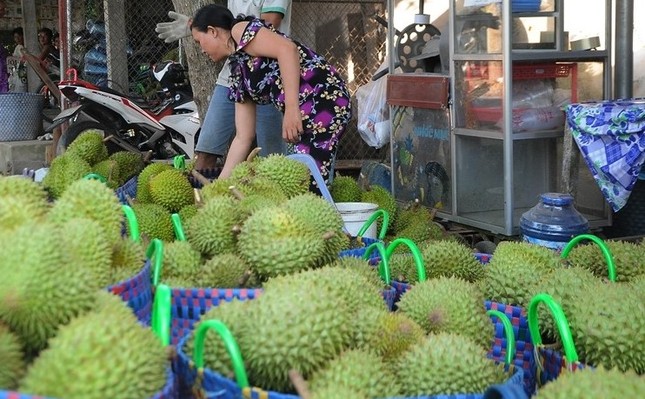
Vietnam’s durian exports in the first few months of 2025 have seen a sharp decline. Photo: CK.
Regarding the challenges of durian cultivation, local agricultural authorities have noted that while the area dedicated to durian cultivation continues to expand, it is done so in a scattered and unorganized manner. Additionally, there are not many links between production and consumption, as most farmers sell their fruit directly to the market through traders, leading to price instability.
According to the Department of Agriculture and Environment of Hau Giang province, in recent years, durian has been a popular choice for farmers, even though authorities have advised against spontaneous cultivation without a stable output market. To maintain export markets, local authorities have continuously monitored and supervised the quality and growing area codes of durian products.
Mr. Tran Thai Nghiem, Deputy Director of the Department of Agriculture and Rural Development of Can Tho city, said that the local authorities regularly advise farmers to focus on the quality of durian products, implement growing area codes, and explore processed products made from durian instead of solely selling fresh fruit. It is also crucial to pay attention to the domestic market to avoid complete dependence on exports and to mitigate risks associated with technical barriers and sudden policy changes in export markets.
The representative of the Department of Agriculture and Rural Development of Can Tho city believes that the sharp decline in durian prices and the unstable consumption market this year have highlighted issues that need to be addressed for the sustainable development of the durian industry. Exports are heavily reliant on the Chinese market, so any changes or dynamics in this market significantly impact the domestic market as well. Exporting a batch of durian is challenging, and having it returned is even more difficult for both farmers and exporters. Therefore, product quality must always be a top priority.
According to the Vietnam Vegetables and Fruits Association, the Chinese market still demands a large quantity of durian, both fresh and processed, but the fruit must meet quality standards. Durian farmers also hope that relevant authorities will promote and expand consumption markets to reduce dependence on a single market.
In a recent open letter to the Minister of Agriculture and Rural Development, Mr. Vu Duc Con, Chairman of the Durian Association of Dak Lak province, proposed: “In July, the Protocol between the Ministry of Agriculture and Rural Development and the General Administration of Customs of China will expire. The Ministry of Agriculture and Rural Development needs to review, evaluate, negotiate, and re-sign the protocol, and the process of granting and managing growing area codes and packaging facility codes should include the opinions of experts and enterprises. Additionally, there is a need to develop clear regulations on growing area codes and packaging facility codes to facilitate exports and handle violations effectively.”
For growing areas that violate regulations, the competent authorities should demarcate and alert red zones and improve cultivation processes. According to Mr. Con, it is necessary to establish export standards for durian, apply science and technology to inspect for O-chemicals and cadmium, and ensure food safety. Currently, China has only approved a limited number of laboratories introduced by the Plant Protection Department for testing these parameters. To avoid monopolies and bureaucratic obstacles, Mr. Con suggested continuing negotiations with China to open more laboratories for businesses to choose from.
Vietnam’s durian exports in the first four months of this year reached nearly 27,000 tons, valued at almost $99 million, decreasing by over 52% in volume and over 61% in value compared to the same period last year. China remained the largest importer of Vietnamese durian in the first quarter of 2025, with a turnover of over $49.5 million, a decrease of over 78% compared to the previous year. Notably, Taiwan (China) led the growth in Vietnamese durian imports, with an increase of up to 2,906% in the first quarter compared to the same period last year.
Why Do Businesses Claiming to Be Drug-Free Still Test Positive for Saffron in Their Durian Fruits?
The discovery of high levels of cadmium in durian is primarily due to soil pollution, prolonged use of fertilizers and pesticides in cultivation. Additionally, the use of color enhancers by some businesses during the preliminary processing stage further exacerbates the issue, resulting in the presence of Sudan Yellow, a harmful dye, in the fruit.
The Truth Behind Vietnam’s Durian Losing its ‘Throne’
Despite being touted as the billion-dollar industry for Vietnamese agriculture, durian exports have only achieved 20% of the target since the beginning of the year. This situation not only impacts the overall goals of the industry but also leads to a significant dip in the domestic market value of durians.

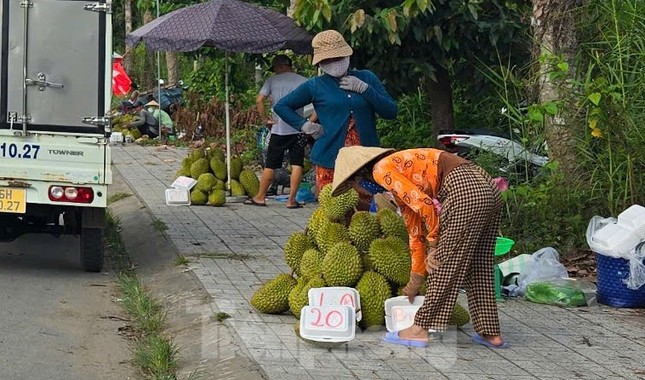
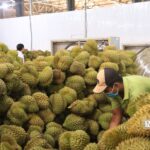
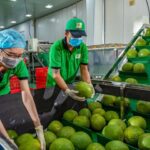

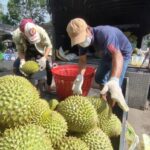
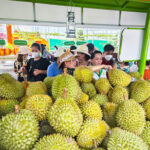

![[Photo Essay]: Experts, Managers, and Businesses Unite to Forge a Path Towards Sustainable Green Industry](https://xe.today/wp-content/uploads/2025/07/z678592918-218x150.jpg)












